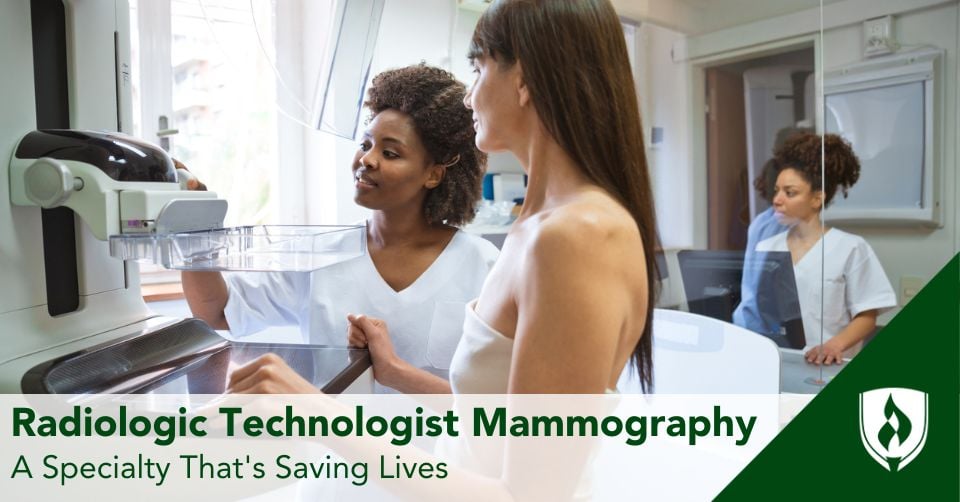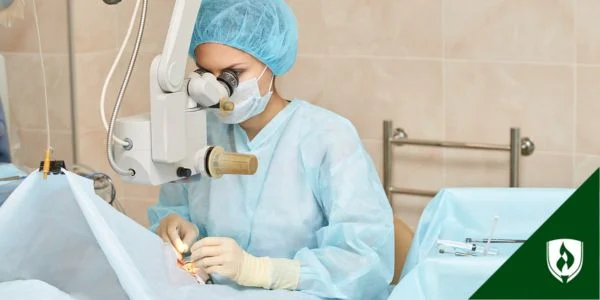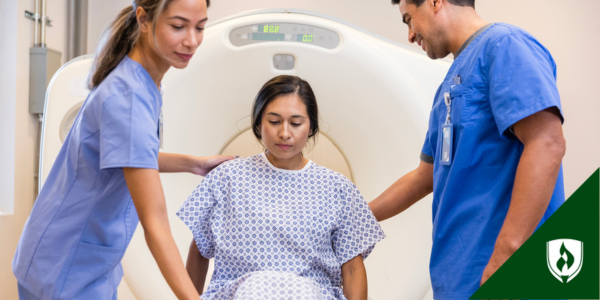
Breast cancer is the most common cancer diagnosed in women, and it's the 2nd leading cause of death from cancer among women in the United States. Most people have probably seen an advertisement urging people to go get screened for breast cancer—but many of us never think about what it takes to perform those mammograms.
According to the American Cancer Society® (ACS), approximately 1 in 8 women in the US will be diagnosed with invasive breast cancer, and 1 in 43 will die from the disease. With their ongoing research, along with historical data, the ACS predicts that in 2024, approximately 42,250 women and 530 men will die from breast cancer.1
In good news, the death rate has fallen dramatically since 1989. It's decreased by 44% because of screenings and advances in the treatment of the disease. That's almost 518,000 lives saved.
When the cancer is diagnosed early, there is a 99% 5-year survival rate. That percentage drops when breast diseases are found more advanced. We know early detection is a key factor for women ages 40 and older—but only an estimated 67% of women have had a screening mammogram.1
Many people don't get screened until they notice some kind of symptom, and the early phases of breast cancer are often symptomless. So how can women get that screening mammogram?
There's a great need for more mammographers
More mammography technologists in healthcare can improve the accessibility and availability of breast cancer screenings.
According to 2023 survey data from the American Society of Radiologic Technologists® (ASRT), the vacancy rate for Radiologic Technologists in Radiography has reached an all-time high of 18.1%.2
For the specialty of Mammography, there is another all-time high vacancy of 13.6%. With the growing number of people in the US population, especially those aged 40 and above, the need for technologists in imaging will continue to grow.
While it's hard to get specific mammography projections, employment opportunities for Radiologic and MRI Technologists are projected to grow at a faster rate than the average for all occupations, according to the Bureau of Labor Statistics.3
That translates to about 16,000 openings for radiologic and MRI technologists projected each year, on average, over the decade from 2023-2033.3 Without these essential healthcare professionals, we will not be able to increase the accessibility of mammograms and cancer screenings.
What does it take to become a mammographer?
Getting into this allied healthcare career takes focus and hard work—but it doesn't take as much time as you might think. The first step is obtaining certification in Radiologic Technology.
ARRT (American Registry of Radiologic Technologists®) calls this first step a primary pathway, whereas specializations like mammography, bone densitometry and magnetic resonance imaging (MRI) are a post-primary pathways.
Step one: Get training in Radiologic Technology
Radiologic technology programs are typically associate degree programs. Rasmussen's radiologic technology degree program can be completed in as few as 24 months.4
This education will help you gain knowledge about imaging technology, anatomy, patient education and safety—as well as what you'll need to know to pass the ARRT exam. Your program will also include clinical practicum experience and hands-on labs.
Admission requirements for Rasmussen's program in radiologic technology include certain immunizations, a background check and an entrance exam. The entrance exam is most often the TEAS test, but there are a few other entrance exam options.
To get more details on those exceptions, speak with an admissions advisor.
Step two: Get certified as a radiologic technologist
The American Registry of Radiologic Technologists handles national certification for radiologic technology, as well as the certification for specialized imaging work that can come after, such as mammography.
Radiologic Technology certification requires meeting three ARRT requirements...
- Complete an ARRT-approved Educational program (like Rasmussen's Radiologic Technology program!)
- Meet the Ethics requirements to apply for the certification examination
- Pass the radiologic technology Exam
Meeting all three E's will grant you the R.T. (R) designation. At that point, you can apply for positions as a radiologic technologist!
Step three: Complete a post-primary pathway in Mammography
Once you are officially a radiologic technologist, you can specialize in mammography. For this, you need an additional certification in Mammography. This is considered a post-primary credential.
This certification involves 16 hours of structured education where you'll study things specific to the work of mammography (breast anatomy, equipment, etc...). This could come in a mammography course approved by the ARRT and a mammography examination. When you pass the ARRT mammography exam and meet all eligibility requirements, you can be certified as a mammographer.
What does the mammography ARRT certification mean?
Mammography ARRT certification started in 1990 and has helped reduce the number of breast cancer deaths by one-third. In addition to that post-primary credential, the Mammography Quality Standards Act (MQSA) regulated performing mammograms in October 1992.
MQSA requires a certified mammographer to perform the procedure, a board-certified radiologist to read the results, and all equipment approved by the FDA. All these requirements ensure that a safe mammogram is completed by qualified personnel.
Is a mammography technologist different from a radiologic technologist?
A mammogram is a personal and sometimes scary procedure. Women (and men) who have the procedure should feel comforted knowing the person performing their exam has ARRT certification and has trained in a Mammography program, along with the skills to provide optimal patient care.
Mammography has dedicated equipment, meaning it is only used to X-ray breasts. The patient and the technologist are the only ones in the room, and they are often away from other X-ray exam rooms. The procedure includes two X-ray images of each breast using very low radiation doses.
In the past 15 years, technical advancements in equipment have improved mammography. Digital technology provides electronic images that can be enhanced with computer technology and computer-aided detection (CAD) systems to indicate the presence of cancer. Many facilities also use 3D tomosynthesis to create three-dimensional images, often recommended for women with dense breast tissue.
Screening vs. diagnostic mammograms
A mammogram is ordered according to two types: screening and diagnostic. A screening mammogram is an annual exam to detect breast changes in women with no signs or symptoms. A screening mammogram includes two X-ray images of each breast, one from the top and one from the side.
A diagnostic mammogram is ordered when the individual has an unusual change in the breast, such as a lump, pain, nipple discharge, or even a change in size or shape. In addition to the routine of having two views of each breast, additional images of the area of concern are taken with possible magnification views of the area. The equipment is also used if the patient needs a biopsy of the area of concern.
Mammograms save lives, and we need people to perform them
Most people never realize this incredible healthcare career exists. But we need people to train in mammography because screenings can save so many lives.
The ACS® indicates a growing need for Mammographers in specific demographic areas. For example, the percentage of women with breast cancer has increased the most in Asian American/Pacific Islander women, 2.6% annually. For Hispanic women, 1.6% annually, and only 1% in White, Black, and American Indian/Alaska Native women.
Overall, Black women have a 5% lower breast cancer incidence than White women but have a 38% higher mortality rate. Black women are more likely to be diagnosed at a later stage of breast cancer because of a lack of access to screening mammograms.
For all women, a screening mammogram annually increases the chances of finding disease early--to treat it and to increase the survival rate for all patients.
If you haven't really thought about a career in radiologic technology before, check out 7 Appealing Advantages of Being a Radiologic Technologist. This career might be a perfect place for someone like you!
The American Registry of Radiologic Technologists® is a registered trademark of The American Registry of Radiologic Technologists
ARRT® is a registered trademark of American Registry of Radiologic Technologists
ASRT® is a registered trademark of American Society of Radiologic Technologists
American Society of Radiologic Technologists® is a registered trademark of American Society of Radiologic Technologists
ACS® is a registered trademark of AMERICAN CANCER SOCIETY, INC.
American Cancer Society® is a registered trademark of AMERICAN CANCER SOCIETY, INC.
1 Breast Cancer Facts & Figures (2024-2025 report) American Cancer Society flagship journal, CA: A Cancer Journal for Clinicians. [accessed 10/10/2024] https://www.cancer.org/research/cancer-facts-statistics/breast-cancer-facts-figures.html
2 2023 Radiologic Sciences Workplace and Staffing Survey. [accessed 10/10/2024] https://www.asrt.org/docs/default-source/research/staffing-surveys/radiologic-sciences-workplace-and-staffing-survey-2023.pdf?sfvrsn=7f99bd0_4
3 Occupational Outlook Handbook, Radiologic and MRI Technologists, Job Outlook , [accessed 10/10/2024] https://www.bls.gov/ooh/healthcare/radiologic-technologists.htm#tab-6
4 Completion time is dependent on the number of transfer credits accepted and the number of courses completed each term.




